
Feature Article
Phytohaemagglutinin Poisoning
Beans are one of the most versatile and commonly eaten nutritious foods throughout the world. However, the consumption of common beans (e.g. green beans and French beans) and other beans (e.g. red kidney beans and white kidney beans) without proper processing may cause food poisoning due to the naturally present toxin phytohaemagglutinin. This article gives a brief introduction on phytohaemagglutinin poisoning.
Phytohaemagglutinin toxin in beans?
Lectins are widely occurring, sugar-binding proteins that perform a variety of biological functions in plants and animals. However, some of them may become toxic at high levels. Among the lectins known to have toxic effects is phytohaemagglutinin, which occurs at relatively high levels in the seeds of legumes (i.e. beans). Phytohaemagglutinin serves as defence against plant pests and pathogens.
Phytohaemagglutinin, as its name implies, can agglutinate many mammalian red blood cells and interfere with cellular metabolism. Moreover, it is an antinutrient, which can interfere with the absorption of minerals, particularly calcium, iron, phosphorus and zinc.
Phytohaemagglutinin is found in many beans, but its level varies among different species of beans. The concentration of phytohaemagglutinin is the highest in red kidney beans (Phaseolus vulgaris). White kidney beans, another variety of P. vulgaris, contain about one-third the amount of toxin as does the red variety. On the other hand, broad beans (Vicia faba) contain only 5% to 10% of the amount of phytohaemagglutinin that red kidney beans contain. Some commonly consumed beans in Hong Kong, including soya beans , green beans and yard-long beans, have been reported to cause phytohaemagglutinin poisoning in other places. To avoid food poisoning, all beans should be cooked properly before consumption since different cultivars of the same species might have significantly varying levels of the phytohaemagglutinin toxin..

Some commonly consumed beans in Hong Kong that have been reported to cause phytohaemagglutinin poisoning in other places
Clinical presentation of phytohaemagglutinin poisoning
Symptoms of phytohaemagglutinin poisoning include severe stomachache, vomiting and diarrhoea. Some of the characteristics of phytohaemagglutinin poisoning are summarised in the table below:
|
Characteristics of Phytohaemagglutinin Poisoning |
|
|
Mortality: |
Generally not fatal. |
|
Toxic dose: |
As few as four to five raw beans can trigger symptoms. |
|
Onset time: |
Usually begins with gastrointestinal illnesses within one to three hours after ingestion of the food, with subsequent diarrhoea within that timeframe. |
|
Symptoms: |
Upper and lower gastrointestinal illnesses. Vomiting may become severe. In addition to vomiting and diarrhoea, some people may have abdominal pain. |
|
Duration: |
Spontaneous recovery usually occurs within three to four hours after the onset of symptoms, although some cases require hospitalisation. |
|
Susceptible |
All people, regardless of age or gender, are equally susceptible. The severity depends on the dose ingested. |
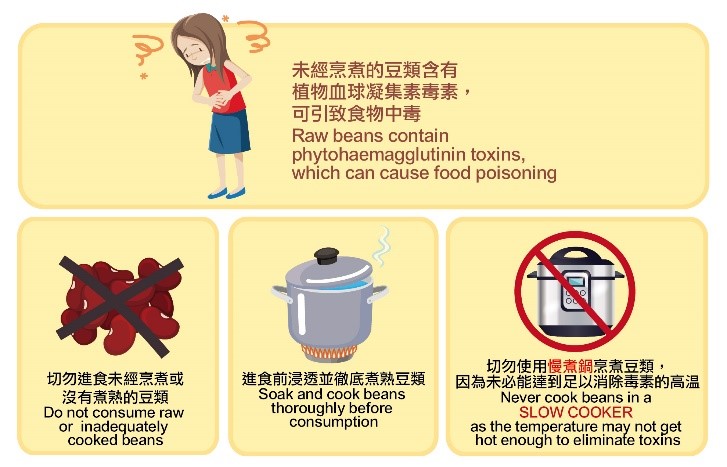
How to prevent phytohaemagglutinin food poisoning from consuming raw beans
Methods of toxin reduction
Cooking with moist heat can reduce the toxicity of phytohaemagglutinin. Compared with fully cooked kidney beans, raw kidney beans could have phytohaemagglutinin levels that are hundreds of times higher. Therefore, the consumption of phytohaemagglutinin-containing beans is not a cause for concern as long as they are sufficiently cooked. Extra care, however, should be exercised when phytohaemagglutinin-containing food is prepared at high altitudes where the boiling point is lower, when low heat cooking methods are employed or in situations where heat transfer is uneven.
To destroy the phytohaemagglutinin toxin, beans should be soaked and boiled thoroughly in fresh water (e.g. soaked for at least 12 hours and then boiled vigorously for at least 10 minutes in water). Previous studies showed that the phytohaemagglutinin toxin remained active even after the beans had been cooked at 85°C for an hour. Therefore, beans should not be cooked at a low temperature, for example in a crock pot or slow cooker, since it may not destroy the toxin. On the other hand, commercially tinned beans are safe to eat without further cooking as they have been subjected to thorough heat treatment.
Food safety limit on phytohaemagglutinin
Phytohaemagglutinin has not been evaluated by food safety regulatory authorities including the Joint FAO/WHO Expert Committee on Food Additives (JECFA), nor a health-based guidance value has been established for risk assessment. Moreover, no relevant food safety standard has been established by the Codex Alimentarius Commission either. Nevertheless, it has been reported that ingestion of as few as four to five raw beans can trigger symptoms. Crucially, cooking with moist heat can remove the toxicity of phytohaemagglutinin. Consumers should not eat raw or inadequately cooked beans.
Key points to note
- Many types of beans contain the natural toxin phytohaemagglutinin. Consumption of raw beans can cause phytohaemagglutinin
- Cooking with moist heat can remove the toxicity of phytohaemagglutinin. Beans must be soaked and boiled thoroughly in fresh water (100°C). Beans should not be cooked at a low temperature, for example in a crock pot or slow cooker, since it may not destroy the toxin.
- Tinned beans are safe to eat without further cooking.
Advice to consumers
- Soak and cook beans thoroughly in water to destroy the phytohaemagglutinin toxin.
- Beans should not be cooked at a low temperature, for example in a crock pot or slow cooker, since it may not destroy the toxin.
- Do not consume raw or inadequately cooked beans.
Mascot ON in Lesson
In October 2023, the media reported that nearly 900 people were affected in a massive food poisoning outbreak caused by Campylobacter species in Japan. The incriminated food was nagashi sōmen, which are noodles flowing down a bamboo chute and being caught by diners with chopsticks as they float by. The pathogen was detected in the spring water sending the noodles down the chute. Travellers can savour local delicacies when travelling, but they should stay alert to threats to food safety. Let’s learn more about Campylobacters in food and travel-related food safety tips in this article.
Campylobacters are commonly found in the intestinal tracts of animals and humans. The most commonly reported Campylobacter species in human diseases is Campylobacter jejuni, followed by Campylobacter coli. These disease-causing Campylobacter species can only grow at above 30℃ but can tolerate higher growth temperatures, and their optimum growth temperature is 42℃. That said, Campylobacters have higher survival rates in food stored under refrigeration compared to food stored at room temperature. Moreover, a micro-aerobic environment, i.e. reduced oxygen environment, is favourable to the growth of most Campylobacter species. Oxygen comprises approximately 21% of the atmosphere, while these bacteria grow optimally at oxygen concentrations ranging from 3% to 5%. According to the literature, consuming as few as 500 Campylobacter cells can cause illnesses.
Gastrointestinal illnesses caused by Campylobacters can affect individuals of different age groups. Among them, children below the age of 5 and young adults aged between 15 and 29 are more prone to gastroenteritis. Its incubation period usually ranges from two to five days. The most common symptoms include watery diarrhoea or bloody diarrhoea, abdominal pain, fever, headache, nausea and/or vomiting, which usually last for 2 to 10 days. While most patients can recover on their own, some may need antibiotic treatment. The infection may be fatal to those with weakened immunity. In rare cases, the infection can be followed by long-term illnesses such as reactive arthritis and Guillain-Barré syndrome (GBS). GBS is a disease in which the body’s immune system attacks the nerves. GBS patients can experience muscle weakness or even paralysis for weeks.
Campylobacters are commonly found in most warm-blooded animals such as poultry, cattle, pigs, sheep and dogs. C. jejuni has a very varied reservoir but is mainly associated with poultry. C. coli is predominantly found in pigs. Inadequately cooked meats (especially poultry) is one of the sources of Campylobacters.
Other sources include unpasteurised milk and products, contaminated raw fruits and vegetables, contaminated water or cross-contaminated ready-to-eat food. Animal faeces can contaminate lakes and streams; the consumption of contaminated water has contributed to a number of global outbreaks. Fruits and vegetables can be contaminated through contact with soil or water containing animal faeces.
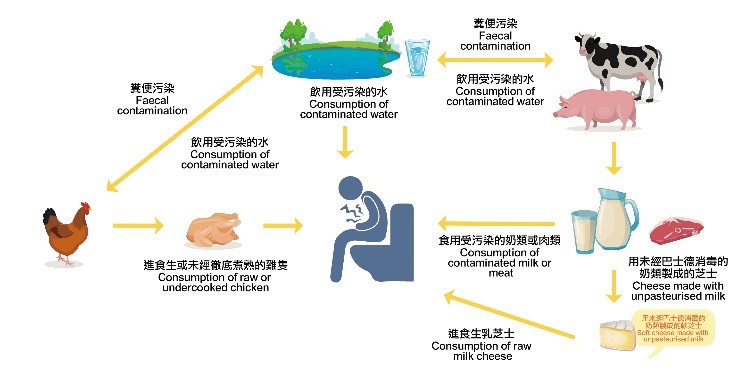
The outbreak mentioned above was traceable to contaminated spring water as the source of Campylobacters. Consumers should make careful food choices while travelling and take the following precautionary measures against food- or water-borne illnesses:
- Wash hands thoroughly before handling and consuming food.
-
Choose beverages and food that are safe to eat, such as boiled water, bottled drinks, packaged beverages; do not eat raw or undercooked meat, poultry, seafood and eggs.
-
Do not drink untreated water.
-
Avoid ice in drinks if in doubt about its source or hygienic conditions.
-
Buy food from hygienic and reliable shops; do not buy food from street vendors or other food outlets with poor environmental hygiene or improper handling of food.
-
Avoid cooked or ready-to-eat food that has been kept at room temperature for hours.
-
Avoid food that is not kept hot (above 60℃) or refrigerated (at or below 4℃) at buffets, markets, restaurants and street vendors.
-
Peel fruits and vegetables if they are to be eaten raw; avoid those with damaged skin.
Dining Out
A ready-to-eat marinated pig oviduct sampleNote 1 collected by the Centre for Food Safety (CFS) from a food shop in Sham Shui Po was tested positive for the pathogen, SalmonellaNote 2. Upon investigation, it was suspected to be caused by cross-contamination of cooked food with raw food, possibly through unclean gloves. The CFS has instructed the shop to suspend the sale of the food product concerned, provided food safety and hygiene education to the staff, and requested them to conduct thorough cleaning and disinfection.
To prevent cross-contamination, food handlers should maintain good personal and environmental hygiene at all times. Wash hands properly before and after work and whenever changing job duties (e.g. handling food after handling rubbish) or when their hands get dirty. Clean and disinfect utensils and equipment after use. Use covered rubbish bins and empty them regularly. Keep food covered during display and storage. Cook food thoroughly and keep it out of the temperature danger zone. Consumers should consume snack food as soon as possible after purchase.


Healthy Eating Basics and Smart Food Choices
Healthy Eating Basics
How to Interpret the Test Report on Plant-based Milk

Recent years has seen the launch of many beverages made with plant-based milk. An organisation collected 39 samples of prepackaged plant-based milk (including almond milk, coconut milk, rice milk, oat milk and soy milk) on the market for food safety and nutrient content tests.
Listen to Our Mascots:
- From 2020 to mid-2024, the CFS collected a total of more than 450 plant-based milk samples for chemical (including nutrition content) and microbiological tests. Except for one non-prepackaged soy milk sample containing an excessive amount of Bacillus cereus, all the remaining samples passed the tests. The CFS has published the results and taken follow-up action.
Food Safety Reminders:

Smart Food Choices
Stewed Steamed Rice with Conpoy and Egg

When it comes to cooking stewed steamed rice, butter and cream will come to mind, which may put many people off. To give the rice a rich and fresh flavour, why not try the Chinese cooking method? Seasoned with broth, this dish is just as healthy and tasty with nutritious eggs and vegetables as ingredients.
Today's recommended “stewed steamed rice with conpoy and egg” dish requires careful thought to prepare despite the simple ingredients. Eggs are a rich source of protein, comparable to meat. Cooking the yolk and the white separately can preserve the eggs’ nutrients as well as highlight the colourful presentation of the dish.
https://restaurant.eatsmart.gov.hk/eng/content.aspx?content_id=750
News on CFS
1. CFS's Trade Talk on Glycidyl Fatty Acid Esters & 3-monochloropropane-1,2-diol Ester in Food
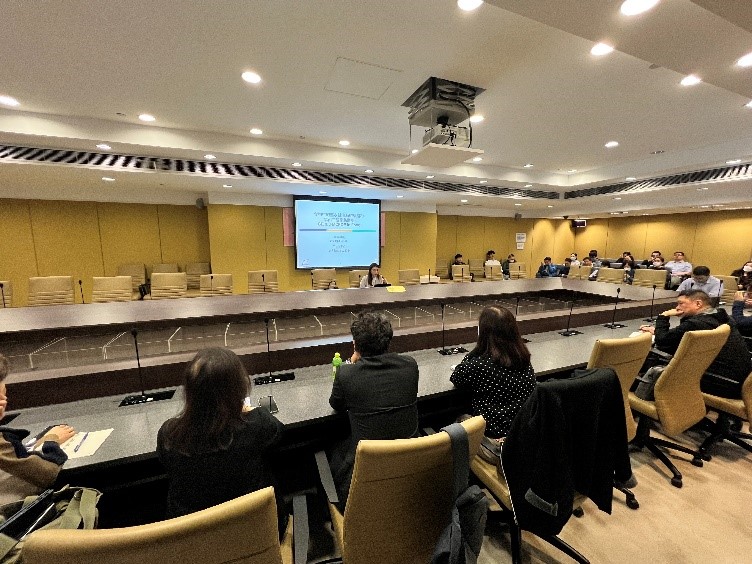

https://whatsapp.com/channel/0029VaMrUsUIXnlz5oAkZG1T



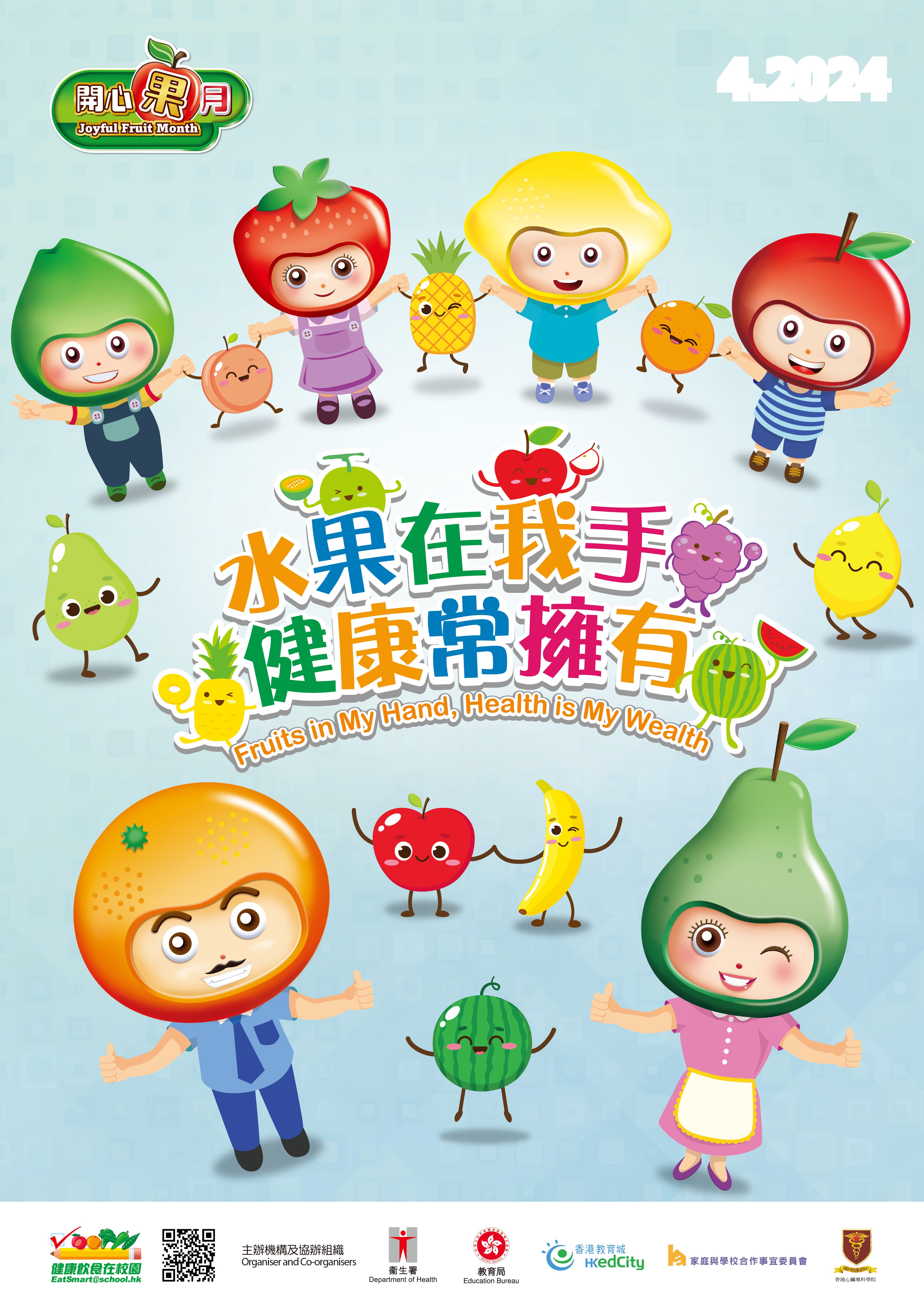
The CFS has always supported the “Joyful Fruit Month” initiated by the DH. The campaign aims to promote the habit of eating adequate fruit every day and has received widespread support from schools and various sectors of the community over the years.
In April this year, the CFS even put up community posters with the theme of “Joyful Fruit Month” in public markets under the FEHD to continue to create a cheerful atmosphere and disseminate health messages.
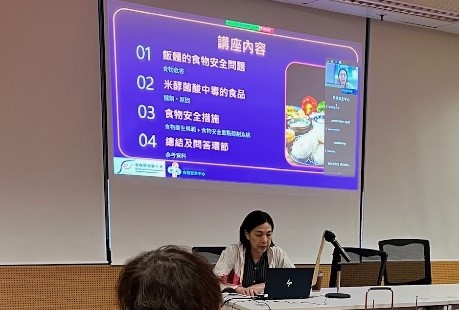
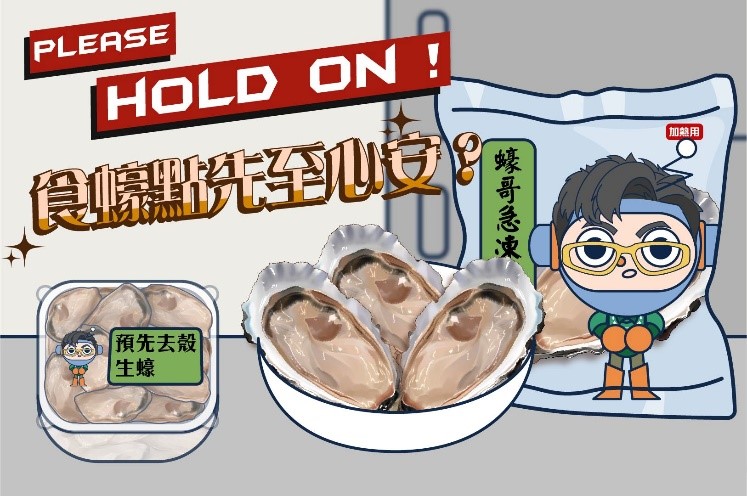
The oyster season has come, do you fancy some raw oysters? But before you put them into your mouth, wait a moment and take a look at the information below.
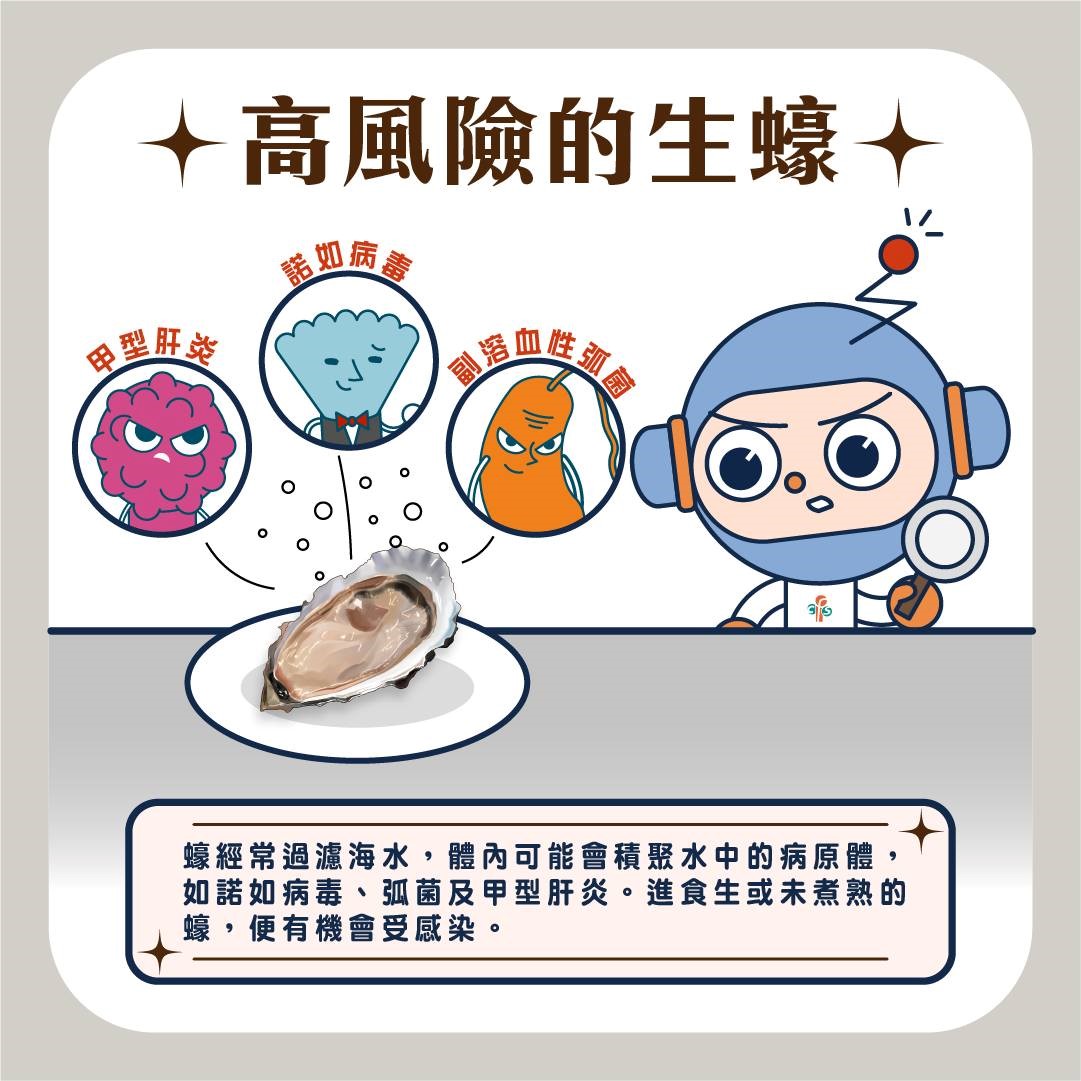
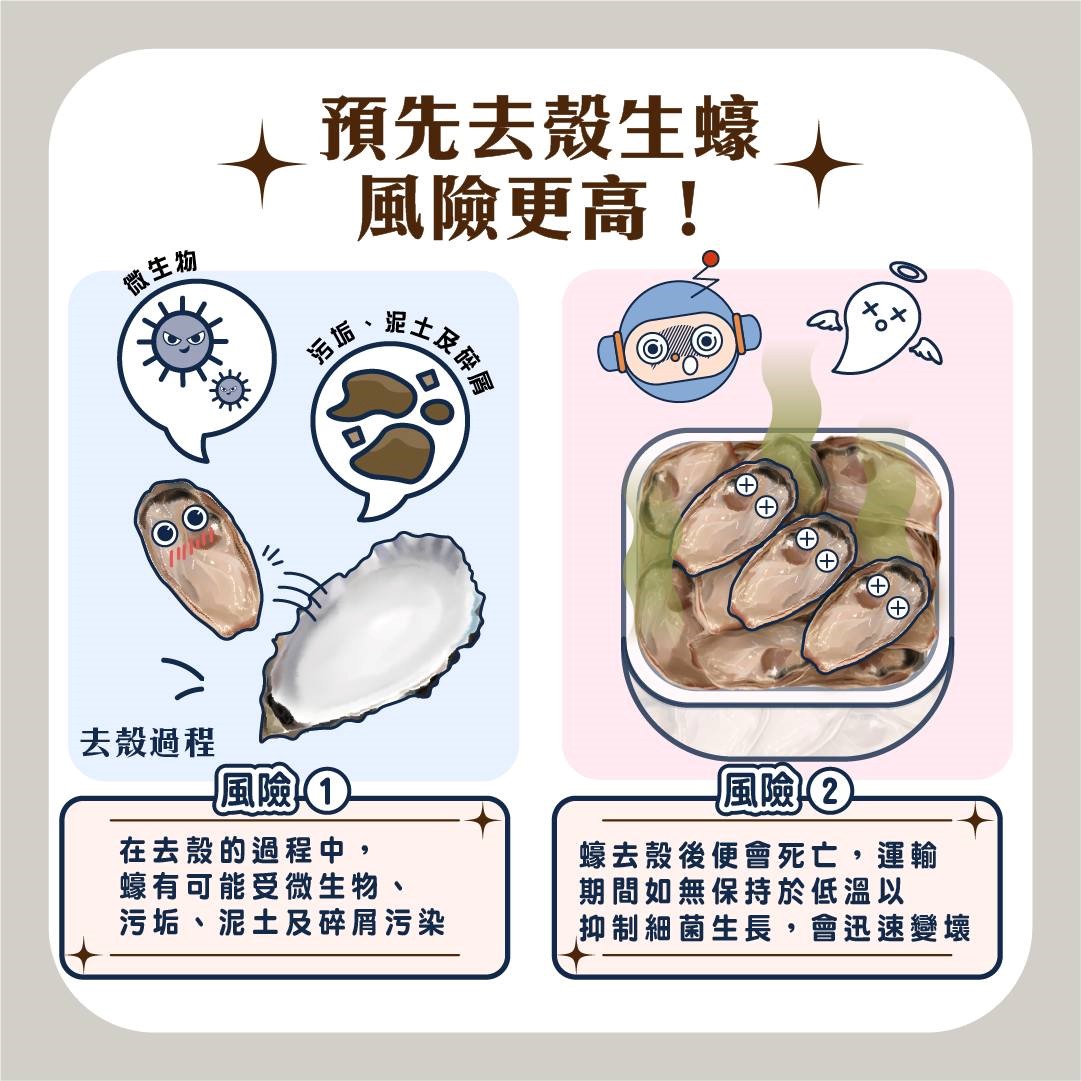
Excessive dietary exposure to metallic contaminants may pose various adverse health effects. In Hong Kong, the Food Adulteration (Metallic Contamination) Regulations list the maximum levels of metal in specified foods (including common seafood).
The CFS has been taking samples of oysters and related products at the import, wholesale and retail levels for chemical and microbiological testing under its routine Food Surveillance Programme. From January 2020 to October 2023, over 2 500 samples of oysters and related products were collected for chemical and microbiological testing. Except for two imported raw oyster samples which were found to contain excessive cadmium and E. coli respectively, all samples passed the tests. The overall satisfaction rate was over 99.9%.
- Purchase oysters for raw consumption only from reliable licensed premises, including those online ones. Food businesses must obtain a relevant permit/written permission for selling oysters for raw consumption.
- Chillies, wasabi and wine cannot effectively kill the bacteria and parasites in food.
- Cooking oysters until the internal temperature reaches 90℃ for 90 seconds is the only way to kill the pathogens and viruses in them.
- Maintain a balanced diet and do not overindulge in oysters.
- Susceptible populations (e.g. pregnant women, infants and young children, the elderly and people with weakened immunity) should not consume raw or undercooked oysters, particularly pre-shucked ones.
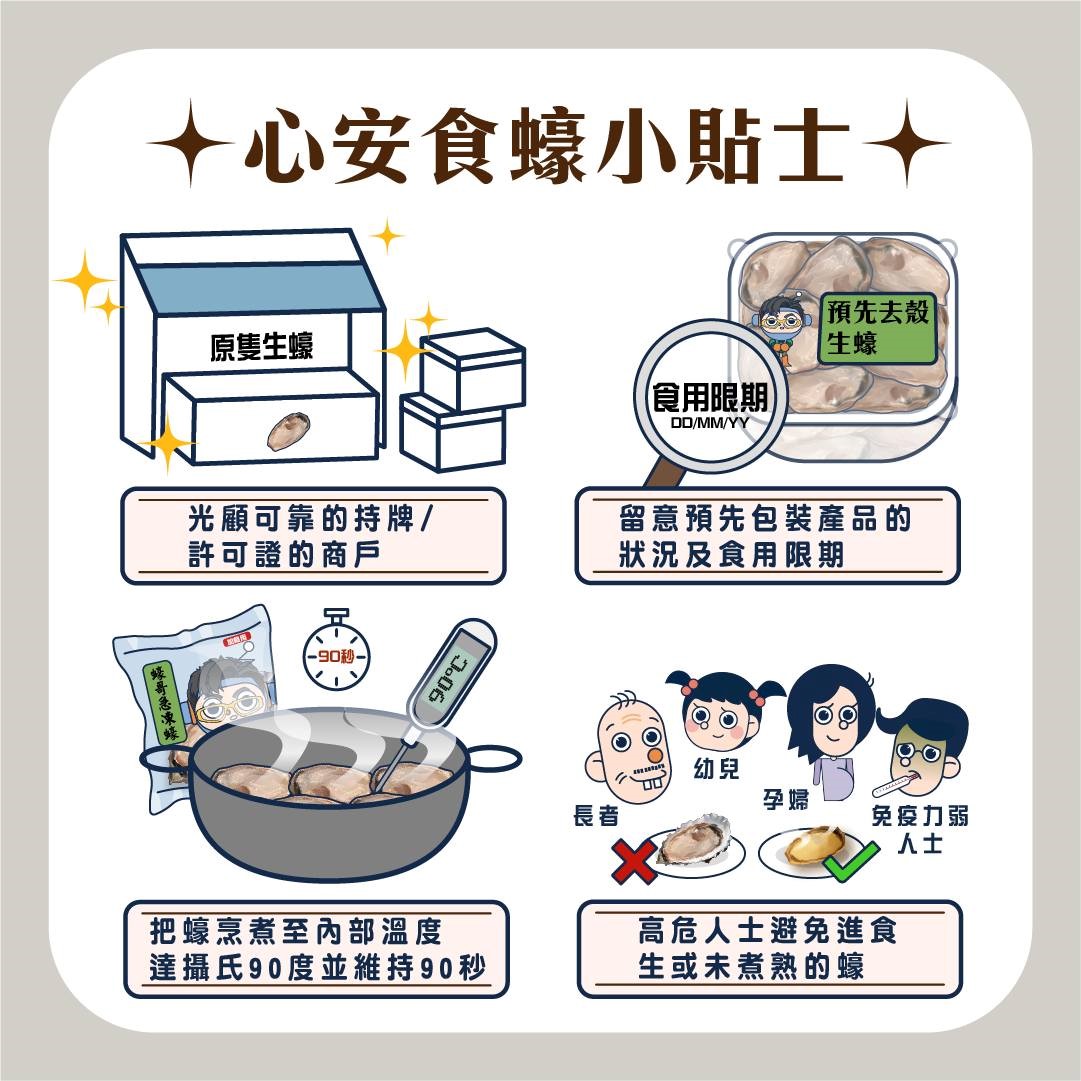
Food Safety Quiz
- 1-4%
- 5-10%
- 11-14%
-
15-20%
- 32°C
- 42°C
- 52°C
-
62°C
- Avoid cooking food at too high a temperature for too long
- Trim the fat present in the food before air-flying
- Parboil the food before air-flying
- All of the above

Diary of Mascot ON
Food Safety Tips for Using Air Fryers
To prevent food poisoning, cook food thoroughly, especially for larger chunks of food. Do not overload air fryers. Turn the food occasionally when cooking. Like any high-temperature dry-heat cooking methodNote 2, air frying is prone to formation of process contaminants like acrylamide and polycyclic aromatic hydrocarbons (PAHs). To minimise their formation, do not cook food at too high a temperature for too long. Aim for a golden-brown colour when air frying starchy food. Trimming the fat present and parboiling the food before air-frying can also help to reduce the formation of process contaminants.
Consumers should maintain a balanced diet with plenty of vegetables and fruits and keep the total amount of fat and salt in check.







